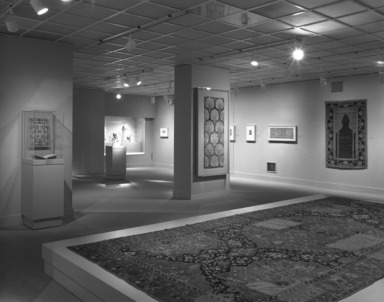

Collector's Eye: The Ernest Erickson Collections at The Brooklyn Museum, March 27, 1987 through May 18, 1987 (Image: PHO_E1987i036.jpg Brooklyn Museum photograph, 1987)

Collector's Eye: The Ernest Erickson Collections at The Brooklyn Museum, March 27, 1987 through May 18, 1987 (Image: PHO_E1987i037.jpg Brooklyn Museum photograph, 1987)

Collector's Eye: The Ernest Erickson Collections at The Brooklyn Museum, March 27, 1987 through May 18, 1987 (Image: PHO_E1987i038.jpg Brooklyn Museum photograph, 1987)
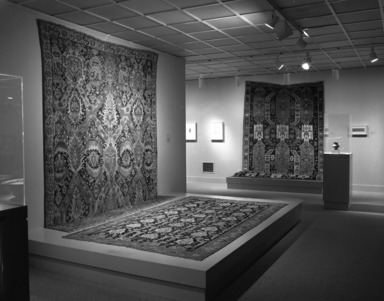
Collector's Eye: The Ernest Erickson Collections at The Brooklyn Museum, March 27, 1987 through May 18, 1987 (Image: PHO_E1987i039.jpg Brooklyn Museum photograph, 1987)
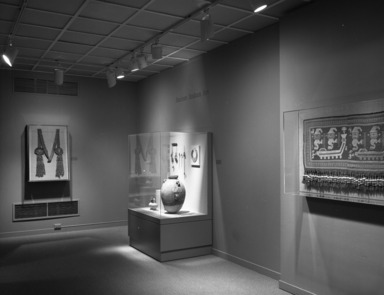
Collector's Eye: The Ernest Erickson Collections at The Brooklyn Museum, March 27, 1987 through May 18, 1987 (Image: PHO_E1987i040.jpg Brooklyn Museum photograph, 1987)
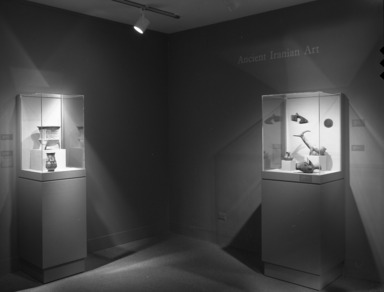
Collector's Eye: The Ernest Erickson Collections at The Brooklyn Museum, March 27, 1987 through May 18, 1987 (Image: PHO_E1987i041.jpg Brooklyn Museum photograph, 1987)

Collector's Eye: The Ernest Erickson Collections at The Brooklyn Museum, March 27, 1987 through May 18, 1987 (Image: PHO_E1987i042.jpg Brooklyn Museum photograph, 1987)
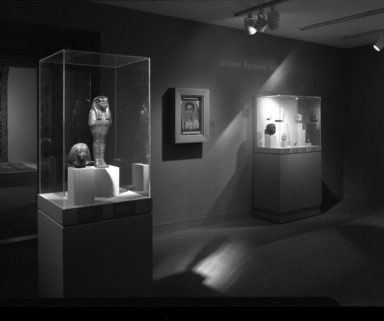
Collector's Eye: The Ernest Erickson Collections at The Brooklyn Museum, March 27, 1987 through May 18, 1987 (Image: PHO_E1987i043.jpg Brooklyn Museum photograph, 1987)

Collector's Eye: The Ernest Erickson Collections at The Brooklyn Museum, March 27, 1987 through May 18, 1987 (Image: PHO_E1987i044.jpg Brooklyn Museum photograph, 1987)
Collector's Eye: The Ernest Erickson Collections at The Brooklyn Museum
-
March 1, 1987
Art collectors -- past, present and future -- will be honored at a gala dinner-dance at The Brooklyn Museum on Saturday evening, April 25. The Collectors Ball will be held in the Museum’s grand Court, located on the third floor, and promises to be one of the most delightful social events of the season. Proceeds from the glittering evening will benefit The Brooklyn Museum.
The black-tie affair has been an annual event of the Community Committee of The Brooklyn Museum, a volunteer organization, with the support of the Board of Trustees since 1957. Chairmen of the benefit are Mr. and Mrs. Milton F. Rosenthal, Mrs. James Marshall and Mrs. Charles McTiernan.
Each year one or two individuals are selected to be honored at the ball and receive the Augustus Graham Medal, named for one of the founders of The Brooklyn Museum. This year’s honoree is the late Ernest Erickson, collector extraordinaire and former Trustee. The posthumous award will be accepted by Abraham S. Guterman, Esq., President of the Ernest Erickson Foundation. The Collector’s Eye: The Ernest Erickson Collections at The Brooklyn Museum, a presentation of 203 masterworks from the generous gift made to the Museum in December of 474 objects will be available for viewing during the gala.
The evening’s festivities will begin at 7:30 with a champagne reception on the fifth floor. Dinner will follow at 8:30 in the Court with dancing until 12:30 A.M. to the music of the Lester Lanin Orchestra.
Later in the evening a special raffle drawing to award valuable prizes will take place. Prizes include: a Black Sapphire® ranch mink coat, donated by Antonovich Furs; a round-trip for two to Cairo on KLM Royal Dutch Airlines, furnished by Archaeological Tours, N.Y., with ground arrangements supplied by Sheraton Hotels; round-trip transportation for two to Paris, gift of American Airlines; a three-day cruise on the Mississippi for two, courtesy of the Delta Queen Steamboat Company; a ride in a Forbes Magazine hot-air balloon, departing from the Forbes estate in New Jersey; and a walk-on appearance on the television soap opera “Ryan’s Hope,” among others.
Ticket prices begin at $250 for two. Contributor tickets are $400 for two, and include a limited edition, signed graphic by the noted contemporary American artist Beverly Pepper.
For Ticket information, call the Community Committee office at (718)789-2493, or (718)638-5000, ext. 287.
Brooklyn Museum Archives. Records of the Department of Public Information. Press releases, 1971 - 1988. 1987, 123-124.
View Original -
March 1, 1987
In celebration of its recent gift from the Ernest Erickson Foundation, The Brooklyn Museum will feature 203 masterworks from the outstanding collection of the late Ernest Erickson, former Trustee of The Brooklyn Museum, in an exhibition opening March 27. Entitled The Collector’s Eye: The Ernest Erickson Collections at The Brooklyn Museum, the presentation will be on view in the Robert E. Blum Gallery, located on the first floor, through May 18, 1987.
The Ernest Erickson Collections at The Brooklyn Museum comprise 474 objects encompassing nearly five thousand years of history, and focusing on the cultures of ancient and non-European peoples. The works, on loan to the Museum anonymously for many years, are outstanding not only for their diversity, but for the high quality of many of the objects. The exhibition is organized into five sections -- Andean and North American Indian art, ancient Egyptian art, ancient Iranian art, Indian and Southeast Asian art, and Islamic art.
The art of the Andes, the largest single group of works in the Erickson collections, is represented in the exhibition with some 60 rare artifacts, which span more than ten centuries. Notable among this group are the Nasca polychrome ceramics (A.D. 100-700) decorated with designs that range from realistic birds to fantastic composite creatures, finely woven Huari tapestry tunics (A.D. 600-800) and an intricately carved mirror handle and gold ear ornaments reflecting the power and wealth of the Chimu ruling class (A.D. 1100-1500).
In addition, the Spanish influence on native Andean artistic traditions is illustrated in the exhibition by a rare embroidered tunic dating to the late 17th century. The borders of this tunic include Spanish heraldic motifs and scenes of Inca ceremonies.
Among the North American objects on view are several finely carved works in ivory, including an Eskimo skin scraper and a series of charms used by Northwest Coast shamans for curing the sick.
The works in the Egyptian art holdings are more notable for their aesthetic than their historical or archaeological importance. With an emphasis on statuary and reliefs, they span most of the major periods of Egyptian history. The earliest object in the exhibit is an Old Kingdom Head of a Man, dating from Dynasty V (2475-2345 B.C.). Sculpture of the Middle Kingdom (1994-1781 B.C.) is represented by a Funerary Figure of a Man and a wooden Statuette of a Noblewoman, intended for the subject’s tomb.
Among the reliefs on view the jewel-like precision of Oarsmen and Dancers on a Tow Boat from the reigns of Hatshepsut and Thuthmosis III (1479-1425 B.C.) stand out. Portrait of a Noblewoman (c. A.D. 150), one of the Fayyum portraits -- named after the region southwest of Cairo -- attests to the sophisticated painterly skills that flourished in Egypt at the time. From the Ptolemaic Period (305-30 B.C.) a delicately modeled silver Ibis of the God Thoth is noteworthy.
The Indian and Southeast Asian works from the Erickson collections have significantly augmented the Museum’s own holdings in this area, and the 37 objects in the exhibition form the nucleus of a fine Buddhist collection. A third-century limestone Seated Buddha Torso manifests the intense spirituality of early Buddhist images and is one of the few examples of Amaravati-style sculpture in the round in the United States. Equally striking are two Buddha images from India’s classical age, the Gupta Period (c. 350-500).
Of the Southeast Asian material on view, the seven Buddhist sculptures from Thailand of early Mon or later Khmer-derived styles are outstanding examples. Like their Indian prototypes, they are serene and noble images portrayed in attitudes of eternal compassion.
A special mention should also be made of a group of medieval north Indian reliefs and south Indian bronzes representing the Hindu art tradition, and the Indian paintings, which concentrate on the high points of various regional traditions, but were obviously assembled for their aesthetic quality.
The phenomenal speed with which ideas traveled within the Muslim world and the way in which Islamic artists adapted to them are brilliantly documented in the Islamic holdings. The 71 works in the exhibition provide a fascinating panorama of Islamic art history and reflect the dominations of Fatimids in Egypt, Mongols in Iran and Ottomans in Turkey and the Levant. One can trace invasion and conquest by the changes in artistic style that followed. Exceptional are the Seljuq ceramics, Tulunid textiles, Ottoman tiles and Caucasian carpets.
The ancient Iranian art holdings are the smallest of the five categories. From this group the exhibition includes a ceramic Ibex Rhyton (c. 900-750 B.C.), which is striking in appearance. Two bronze objects, a disk and an ax blade, dating from the 2nd and 1st millennium, are also noteworthy from this group.
The exhibition has been coordinated by Linda S. Ferber, Chief Curator at The Brooklyn Museum. It is accompanied by a 272- page catalogue fully illustrating and discussing all the objects in the exhibition, and includes a checklist of all 474 objects in the Erickson Foundation gift ($19.95, softcover). It is published by The Brooklyn Museum and contains essays by Linda Ferber; Diana Fane, Curator of African, Oceanic, and New World Art; Richard A. Fazzini, Curator of Egyptian, Classical, and Ancient Middle Eastern Art; Robert S. Bianchi, Associate Curator of Egyptian, Classical, and Ancient Middle Eastern Art; James F. Romano, Associate Curator of Egyptian, Classical, and Ancient Middle Eastern Art; Amy G. Poster, Curator of Oriental Art; and Sheila R. Canby, Associate Curator of Islamic Art.
In conjunction with the exhibition the Museum’s Department of Public Programs and Media has organized several programs on collecting and connoisseurship. On Saturdays, April 11, 18, May 2 and 9, from 11 a.m. to 1 p.m., a seminar entitled “Developing a Collector’s Eye” will offer participants an opportunity to hear the Museum’s curators share collection histories and address issues of how to determine an object’s quality and condition. The cost of the seminar is $75, senior citizens and students $60. In addition, two free panel discussions will be offered. On Saturday, April 11, from 2 to 4 p.m., a panel discussion on the subject of “The Connoisseurship of Andean Textiles: Old and New” will take place. The following Saturday, April 11, from 2 to 4 p.m., a discussion on the “Current Issues for Oriental Art Collectors” will be held. A wine and cheese reception will follow both. And four gallery talks will be conducted in The Collector’s Eye on April 5 and 12 at 2 p.m., and on May 3 and 17 at 3 p.m. For further information, call (718) 638-5000, ext. 232.
Brooklyn Museum Archives. Records of the Department of Public Information. Press releases, 1971 - 1988. 1987, 126-130.
View Original -
March 27, 1987
The Brooklyn Museum has announced the gift to the Museum of 474 objects that have been on loan anonymously for many years through the generosity of the late collector Ernest Erickson. In celebration of this important gift made in December by the Ernest Erickson Foundation, an exhibition of 203 masterworks from this outstanding collection will open at the Museum on March 27 and be on view through May 18, 1987.
“The gift of the Ernest Erickson Collection is one of the most important events in the Museum’s history in this century,” noted Robert T. Buck, Director of The Brooklyn Museum. “The revelation, at last, of Mr. Erickson’s identity as a great connoisseur and public benefactor is of special satisfaction to those who have known of his mission over these many years and is perhaps the most fitting tribute to his memory,” he said.
The Ernest Erickson Collection is really five collections at The Brooklyn Museum and is outstanding not only for its diversity, but for the high quality of many of its objects. It focuses on the cultures of ancient and non-European peoples, and encompasses nearly five thousand years of history. In loaning his objects to the Museum over the years, Mr. Erickson once wrote, his mission was to help Westerners “better understand another culture.”
The ancient art of the Andes is the largest group of works in the Erickson Collection with nearly 200 examples of textiles, ceramics and metalwork ranging in date from 300 B.C. to the 16th century. Also noteworthy from the Americas is a small group of North American Indian objects of exceptional beauty. The second largest category of objects is the Islamic art holdings with over 130 works, including a number of unique examples of Islamic metalwork, early Egyptian and Iraqi ceramics and early Egyptian textiles.
The next largest group of works is the Indian and Southeast Asian holdings with almost 70 objects, mostly sculpture and miniature painting. Among the classic images of Asian art from the Erickson Collection are four outstanding early Buddha images.
The 36 ancient Egyptian pieces in the Erickson Collection range in date from Dynasty V to the Roman Imperial Period (c. 2500 B.C. to A.D. 200). Most notable among these are a group of extraordinary reliefs from the Late Period (c. 720 B.C.-A.D. 250), an important Fayyum portrait (c. A.D. 150) and a group of exceptional objects from Dynasty XVIII (c. 1550-1300 B.C.).
The smallest of the five categories is the ancient Iranian art holdings with a representative group of twenty bronzes dating from the 2nd and 1st millennium, and several ceramic vessels reflecting over twenty-five centuries of the Iranian potter’s skill.
Ernest Erickson was born in Åland, an island belonging to Finland, in 1893. He moved to the United States in 1923, and rose from laborer and technician in paper mills in Canada and this country to the presidency of the Pulp Sales Corporation, sole outlet and distributor for all Finnish wood pulp to the paper industry of North America and portions of South America.
Mr. Erickson began collecting during the Depression years, and started placing objects on loan to the Museum in 1942. He believed, however, that the artworks should be exhibited “without diverting the viewer’s attention to their ownership,” and always insisted on anonymity. He was a member of The Brooklyn Museum Board from 1965 until his death in 1983. Mr. Erickson’s close association with the Museum and its curators for over four and a half decades has had an important impact on the size and quality of the Museum’s collections today.
Brooklyn Museum Archives. Records of the Department of Public Information. Press releases, 1971 - 1988. 1987, 011-13.
View Original -
March 13, 1987
The Collector’s Eye, a selection of masterworks from the extraordinary Ernest Erickson Collections, goes on display in the Robert E. Blum Gallery at The Brooklyn Museum on March 27. It is a tribute to the late Ernest Erickson (1893-1983), a man with an insatiable appetite for the rare and beautiful who was irresistably drawn to the arts of antiquity.
The 203 objects in the exhibition are only a portion of the treasures he left to the Museum. In a wide range of media and diverse fields of art -- Andean and North American Indian, ancient Egyptian, ancient Iranian, Indian and Southeast Asian, and Islamic -- they represent a lifetime of creative collecting.
In accepting the gift of 474 objects from the Ernest Erickson Foundation, Robert T. Buck, Director of The Brooklyn Museum, called it “one of the most important events in the Museum’s history.” He noted that “a collection is not a random accumulation of objects but the result of a quest fueled by both aesthetic and intellectual passion. Ernest Erickson was driven by both.”
It becomes evident upon viewing the selection of masterworks that each object underscores a consummate collector’s fastidious connoisseurship, his infallible eye. Each has what he himself sought in a work of art and what he hoped to bring to the receptive and perceptive viewer -- insight into another civilization. For him art was a medium with the power to confront us not only with the spirit of the artist but with the culture that nourished that artist.
“The encyclopedic range, grand scale and superb quality of the Ernest Erickson Collections at The Brooklyn Museum are almost unbelievable,” commented Mr. Buck. It becomes an even more remarkable achievement when you learn that in the field of art and antiquity Ernest Erickson was largely self-taught.
Born on a small island off Finland, Ernest Erickson came to the United States as a young man in 1923. He rose from apprentice and technician in paper mills in Canada and this country to the presidency of the Pulp Sales Corporation. He began collecting during the Depression years, and started placing objects on loan to the Museum in 1942. As a Trustee for eighteen years, Mr. Erickson devoted his time to building his own collection to complement and augment that of the Museum.
So knowledgeable did he become in the study of his chosen field that The New York Times once referred to him as the Museum’s anonymous “treasure scout.” When it involved acquiring a coveted treasure no effort seemed too great, no journey too long or arduous. A letter written to a curator in 1971 describes the extent of one of his many art odysseys.
“I will stay at Djursholm (Sweden) until September 20th when I leave for Athens, Crete, Beirut, Iran, Kabul, Pesawar, Lahore, Karachi, New Delhi, Bombay (provided war hasn’t broken out) and then home by October 19th.”
For more than 40 years he loaned, always anonymously, many of his most important finds to The Brooklyn Museum. He insisted on the highest standards of conservation and exhibition, while keeping the ultimate aim of public education firmly in mind.
His close association with the Museum and its curators has had an impressive impact on the size and quality of the institution’s collections. Now, in The Collector’s Eye, the cream of his five collections at the Museum will be displayed together for the first time, for all to see. And, at last, for all to know. It is, to borrow a phrase from Michelin, well worth an excursion. Even a long one.
Brooklyn Museum Archives. Records of the Department of Public Information. Press releases, 1971 - 1988. 1987, 026-28.
View Original

